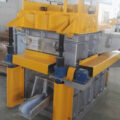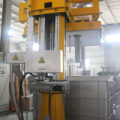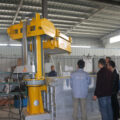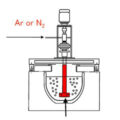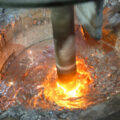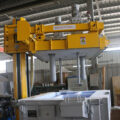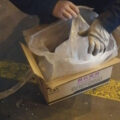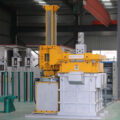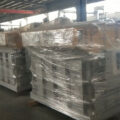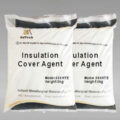During processing in the furnace, dissolved gases (especially hydrogen) are dissolved in the molten aluminum. Removal of the dissolved gas is usually the last step before casting aluminum into a product. If the dissolved gas is not removed, the resulting aluminum product will contain residual gas, forming small cavities or cavities. The finished products formed with these small air bags are undesirable because they may have uneven surfaces, have holes or lack structural integrity. The rotating degassing box introduces an inert gas such as nitrogen or argon into the molten aluminum bath, where the inert gas removes dissolved hydrogen from the molten aluminumh. This process is called degassing by those skilled in the art.

In addition to removing dissolved hydrogen, degassing also removes some solid impurities, such as oxides and salts, sodium fluoride, aluminum fluoride and other fluorides, which may exist in the molten metal suspension in the presence of dissolved hydrogen. The rotating degassing unit will usually be applied before casting, but it is not limited to this because it can be used wherever aluminum is remelted. The feed rate of the air flow can be adjusted to any desired value according to the type of processing equipment used, the melting temperature of the metal to be melted, the size of the melting pipe, and the like.
Commercially used aluminum metal comes from two sources: either pure aluminum extracted from alumina (called primary aluminum), or metal obtained through scrap recycling from many sources (called secondary aluminum).
In both cases, the metal must be refined before it can be used for manufacturing purposes. Oxides form scum, hydrogen is dissolved in metal, and its solubility increases with temperature. Unless removed, the dissolved gas will cause cracks in the final casting as it cools. Another major problem is that impurity elements must be removed from the molten metal to a very low predetermined level.
In the aluminum and aluminum alloy industry, the common practice is to pass chlorine through the molten metal to remove the dissolved gas and further free the metal from pores, oxide inclusions, and other impurities. This process is called fluxing agent or degassing agent, usually 100% chlorine gas is used. The rotating degassing box uses nitrogen to degas aluminum.

